Twelve South HiRise 2 Deluxe 15W Qi2 Review – A Compact, Fast, Qi2 15W Wireless Charging Stand for your iPhone 11 Jan 4:09 AM (5 days ago)
We’ve reviewed a good amount of device accessories from Twelve South and have always been pleased to see how minimalist, sleek, and “just works” their accessories are. Their latest invention, a Qi2 wireless charging accessory for the iPhone, maintains this tradition of excellence while adding some impressive new features.
Packaging Contents




The HiRise 2 Deluxe is built on the design success of previous HiRise models, and I’m glad they’ve taken that approach. Why change something that works? The combination of an aluminum post and vegan leather-wrapped base screams sophistication, making it feel like a natural extension of your Apple devices. The soft, luxury vegan leather adds both visual appeal and a practical non-slip surface for added stability.
The new wireless charger utilises Qi2 wireless charging technology, which brings several benefits: perfect alignment between your device and the charging pad, faster charging speed, improved charging efficiency for better battery health, and more reliable overall performance.
It is more versatile than you might expect. While it’s primarily designed for iPhone and AirPods, it works with any Qi2-compatible devices. The main charging pad delivers 15W of power, faster to charge your iPhone – offering double the speed compared to previous Qi chargers with 7.5W (including their own HiRise 3). I often had to resort to plugging in my iPhone with a charging cable when I wanted faster charging speed, typically when planning to head out soon. However, with this newer Qi2 wireless charger, you get more juice in less time.


The MagSafe implementation makes placing the iPhone on the main charging pad fast and easy. The magnet feels stronger and more sturdy than previous models, giving you peace of mind when your expensive device is attached and charging through the night.
It’s also flexible in terms pf phone positioning. The MagSafe charging pad’s 70-degree tilt provides an excellent viewing angle whether you’re standing across the room or lying in bed while your phone charges on the bedside table. You can place your iPhone either vertically or horizontally, perfect for FaceTime calls or watching videos while charging. Thanks to Apple’s latest StandBy feature, you get that nice, at-a-glance display on the stand which enhances your bedroom’s aesthetic. I find that the angle is just right, especially when you wake up in the middle of the night wondering what time it is.

The vertical design means the HiRise 2 Deluxe doesn’t take up much space on your bedside table or desk. It reduces cable clutter, particularly helpful when charging multiple devices simultaneously. The charger can power up your AirPods or other Qi-compatible devices like my SteelSeries Arctis GameBuds. There’s also another pad for charging a second phone, though it’s limited to 5W charging power. All these features help declutter your workspace by eliminating the need for multiple charging cables.
Twelve South HiRise 2 Deluxe Review Conclusion

The HiRise 2 Deluxe brings together everything we love about Twelve South products – minimalist design, reliable performance, and practical features. While the price point might seem high to some, the combination of fast Qi2 charging, strong MagSafe connection, and multi-device charging capabilities makes it a worthwhile investment for those seeking a premium charging solution with good aesthetic value.
Unfortunately, you cannot charge your Apple Watch here.
Available in Black and White to suit your home or office theme, both colours complement any modern setting. The HiRise 2 Deluxe retails for A$139.99. Also available at Amazon.com (#commissionsEarned)
Disclosure: Twelve South HiRise 2 review sample was supplied for reviewing
Razer’s Gone All Out at CES 2025 with Big Releases 9 Jan 3:28 AM (7 days ago)
Razer has kicked off 2025 with an impressive showcase at CES, revealing several groundbreaking products that could reshape how we experience gaming. From AI-powered gaming chairs to cutting-edge laptops, let’s dive into what’s caught my attention at their showcase.
The star of the show has to be Project Arielle, Razer’s innovative take on gaming comfort. This concept gaming chair builds upon their Fujin Pro mesh design, introducing both heating and cooling capabilities. Having tested numerous gaming chairs myself, the idea of integrated temperature control that can cool you down by 2-5°C or warm you up to 30°C is quite appealing, especially for our varied Australian climate from Winter to Summer.

For those interested in AI coaching, Project AVA looks promising. This AI gaming copilot aims to provide real-time insights from esports coaches while offering hardware optimisations. What interests me most is its ability to analyse gameplay and provide personalized feedback – something that could be genuinely useful for improving competitive gaming skills.
On the hardware front, the new Blade 16 stands out as Razer’s thinnest gaming laptop yet. At just 0.59 inches thin, it’s impressive how they’ve managed to pack an NVIDIA GeForce RTX 5090 and AMD Ryzen 9 AI processor into such a slim chassis. The QHD+ 240Hz OLED display should make gaming look spectacular, though we’ll have to wait until Q1 2025 to get our hands on one. And, I’m not so sure if the machine will be running hot with that slimness.
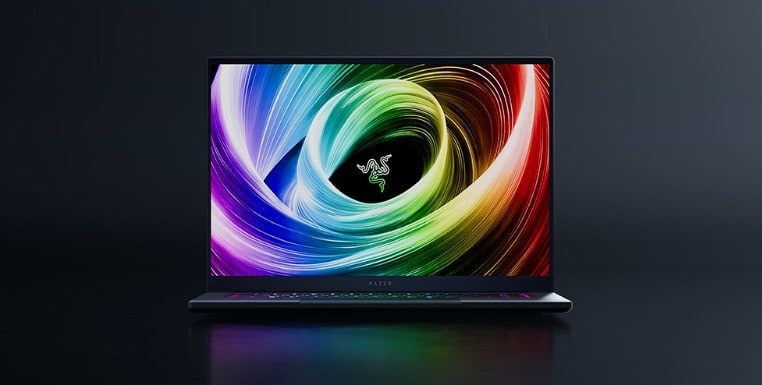
Razer’s also expanding their desktop accessories lineup. The Monitor Stand Chroma, priced at A$329.95, combines practical ergonomics with their signature RGB lighting. Its built-in USB-C hub and 44-pound weight capacity make it more than just a pretty light show. They’re also introducing the Handheld Dock Chroma (A$149.95) for mobile gaming enthusiasts, offering expanded connectivity options including gigabit ethernet.
For those looking to enhance their gaming atmosphere, the new Aether Standing Light Bars (A$179.95) offer an interesting dual-lighting approach. You can face them forward for direct illumination or backward for ambient wall lighting – a neat touch for streaming setups.
On the seating front, beyond Project Arielle, Razer’s introducing the more affordable Iskur V2 X at A$499.95. While it lacks the heating and cooling features of Project Arielle, it retains core ergonomic features like built-in lumbar support and high-density foam cushions. I still love my Razer Enki (check my review out).
Perhaps the most intriguing announcement is their Immersive Ecosystem concept, combining next-gen Chroma RGB, Sensa HD Haptics, and THX Spatial Audio. They’re demonstrating this technology with Funcom’s upcoming Dune Awakening game at CES, showcasing how gaming environments can extend beyond the screen into your room.
For mobile gaming enthusiasts, the PC Remote Play feature for the Kishi Ultra controller looks promising, allowing full-resolution PC game streaming with haptic feedback through the Razer Nexus app.
From what I’ve seen in these announcements, Razer’s betting big on creating more immersive, comfortable gaming experiences. While some products like Project Arielle and Project AVA are still in the concept phase, the immediate lineup of products shows practical innovations that could enhance everyday gaming setups.
These products will be available through Razer.com, RazerStores, and authorised retailers, with most launching in early 2025.
The Creative Side of SEO: Art Meets Algorithm 9 Jan 3:19 AM (7 days ago)
SEO has long been perceived as the mysterious art of manipulating algorithms to rank higher in search engine results. While the common narrative often focuses on keyword stuffing, link exchanges, and technical tweaks, the truth is that SEO can be an inherently creative pursuit.
The Art of Keywords and Rhythm
It’s a common misconception that SEO is merely about inserting keywords wherever they fit. In reality, SEO thrives on a balance of language, context, and purpose. Crafting content that respects the flow of the narrative while meeting algorithmic expectations requires a creative flair. Keywords must be woven into the text gracefully, rather than randomly thrown in. They should enhance the piece rather than disrupt its coherence. By thinking like a storyteller rather than a robot, content creators can create works that satisfy algorithms while genuinely engaging readers.
Consider the choice of words, tone, and style as an equivalent to a palette of colors in a painter’s studio. A carefully blended tone can make the content both intriguing and informative, encouraging readers to linger and learn. By probing deeper into the target audience’s psyche, content creators can paint vivid stories that naturally integrate essential keywords. This approach not only meets the requirements of SEO metrics but also caters to the innate human desire for compelling storytelling.
Another important aspect of successful SEO practice involves reaching out to trusted platforms that can help bolster your search engine efforts. Exploring the strategies and insights offered by resources like Ignite Digital can provide valuable perspectives that align creative efforts with advanced SEO techniques.
User Experience: A Canvas for the Eye
There’s an axiom in the world of SEO that user experience reigns supreme. Aesthetic design, intuitive navigation, and clean interfaces all play a significant role in retaining visitors. When users land on a page with an appealing layout, they’re more likely to linger, explore, and return. This translates to lower bounce rates and higher engagement, factors that search engines value immensely. Hence, successful SEO demands an artist’s eye for marrying functionality with form, ensuring that each page serves as a pleasure to both the eyes and the mind.
The analogy of a stage comes into play when considering user experience. Just as a director sets the scene for a theatrical performance, web designers ensure that every element on a page plays its part flawlessly. This includes nuanced details like micro animations and color schemes that reflect brand identity. A harmonious design caters to both strategic SEO needs and an enriching user journey, achieving the perfect blend that appeals to both audiences and search algorithms.
Content Creation: The Symphony of Ideas
Content is not just an asset; it’s the orchestra playing the symphony of value. Driving organic traffic requires more than aptly placed keywords or attractive visuals. It demands tapping into the cultural zeitgeist, understanding audience interests, and addressing their needs. Building authentic connections through content lets readers find resonance with a brand or site. This artistry extends beyond words—into images, videos, and podcasts—and forms the bedrock of solid SEO practices.
Beyond mere words, content creation is about striking a chord with the audience. This artistic side of SEO pushes creators to blur the lines between marketing and storytelling. Each piece is a chance to touch emotions, evoke thoughts, and ignite conversations. These elements resonate through SEO’s structured backbone, enhancing visibility while crafting an authentic connection with the audience. With every well-composed piece, content creators are like conductors, directing attention to where it’s most impactful.
The Dance with Algorithms
Algorithms are not the enemy; they’re dance partners with an intricate understanding of rhythm and precision. Keeping up with algorithm updates might seem exhaustive, but it acts as friendly feedback rather than an adversarial challenge. By staying informed and adapting, content creators can twirl elegantly with these changes. This dynamic interaction is where creativity comes into play—innovating strategies, finding unique approaches, and trusting intuition to meet SEO demands.
Just as a dancer interprets music through motion, SEOs interpret the language of algorithms through creative content. Crafting strategies to enhance search visibility and relevance is akin to choreographing a dance number. The aim is to blend technical insights with human creativity, creating symbiotic content that resonates with audience intent while adhering to the crafted logic of algorithms. Much like a profitable dance partnership, the harmony between creativity and algorithms paves the way for sustained success in SEO.
Takeaways
Art has always demanded freedom of expression, and SEO is no different. By peeking through the lens of artistry, content creators and SEO specialists can challenge convention and explore uncharted territories, embracing the power of creativity within the framework of algorithms. SEO is not merely a technical endeavor or a battle of the bots. It is a vivid dance of art meeting technology, and at its core, it cherishes the human ability to balance creativity with the constraints of digital systems. So, the next time you face an SEO conundrum, embrace your inner artist and let the magic unfold.
Mastering Android and iOS remote debugging with AppSpector 8 Jan 7:44 PM (8 days ago)

The complexity of remote debugging for mobile platforms
Mobile app development has revolutionized how businesses interact with users, but it also brings significant challenges, especially when debugging issues on remote devices. Android remote debugging and iOS remote debugging each come with unique hurdles—from varying device configurations on Android to the stringent security measures on iOS. Developers and QA engineers need tools that provide a unified, powerful solution to address these challenges efficiently.
AppSpector emerges as a versatile platform for debugging both Android and iOS apps remotely. By providing real-time insights into app behavior, AppSpector enables teams to identify, analyze, and fix issues quickly, saving time and reducing frustration.
Debugging across platforms: a developer’s challenge
Imagine a scenario where a travel app developer, Mia, is tackling user-reported issues on both Android and iOS versions of her app. Android users report crashes during payment processing, while iOS users face inconsistent navigation behaviors. Mia’s standard debugging tools—like Firebase Crashlytics and basic logging—fail to provide enough detail to pinpoint the root causes. With the diversity of Android devices and the strict sandboxing on iOS, traditional approaches leave her with blind spots.
After integrating AppSpector, Mia gains real-time visibility into her app’s performance on both platforms. Using AppSpector’s Android remote debugging capabilities, she discovers that a specific API call is failing on certain Android versions, causing payment crashes. Simultaneously, with iOS remote debugging, she uncovers that malformed JSON responses from the server are disrupting navigation logic. AppSpector’s session replays and annotated logs allow Mia to diagnose and resolve these issues swiftly, ensuring a seamless experience for users.
How AppSpector simplifies Android and iOS remote debugging
AppSpector provides a unified solution for mobile developers dealing with platform-specific debugging challenges. Here’s how it stands out:
- Real-time session monitoring: Debug live user sessions on Android and iOS devices, observing app behavior as it happens.
- Comprehensive data insights: Capture critical details such as network traffic, database queries, UI state, and environment variables across platforms.
- Cross-platform compatibility: AppSpector works seamlessly on both Android and iOS, eliminating the need for separate tools.
- Secure remote access: Debug apps directly on remote devices without requiring physical access, maintaining privacy and security.
- Session replays: Record and replay user sessions for in-depth analysis and collaboration across teams.
- Integration-friendly: Works alongside existing tools like Firebase and Sentry, enhancing rather than replacing current workflows.
The future of mobile debugging with AI
AppSpector’s development team is actively working on AI-powered enhancements to its debugging platform. Planned features include automated detection of performance bottlenecks, intelligent suggestions for bug fixes, and predictive analytics for user behavior. These innovations aim to make debugging faster, smarter, and more intuitive for developers and QA engineers.
Conclusion
Remote debugging for Android and iOS doesn’t have to be a frustrating process. AppSpector bridges the gap between these platforms, providing developers with powerful, real-time tools to diagnose and resolve issues effectively. Whether it’s Android remote debugging or iOS remote debugging, AppSpector is transforming the way developers maintain and optimize their apps. Learn more about how AppSpector can streamline your debugging workflow and enhance app quality.
AMD Joins Forces with Razer for Their Thinnest Gaming Beast Yet – The 2025 Blade 16 6 Jan 7:21 PM (10 days ago)
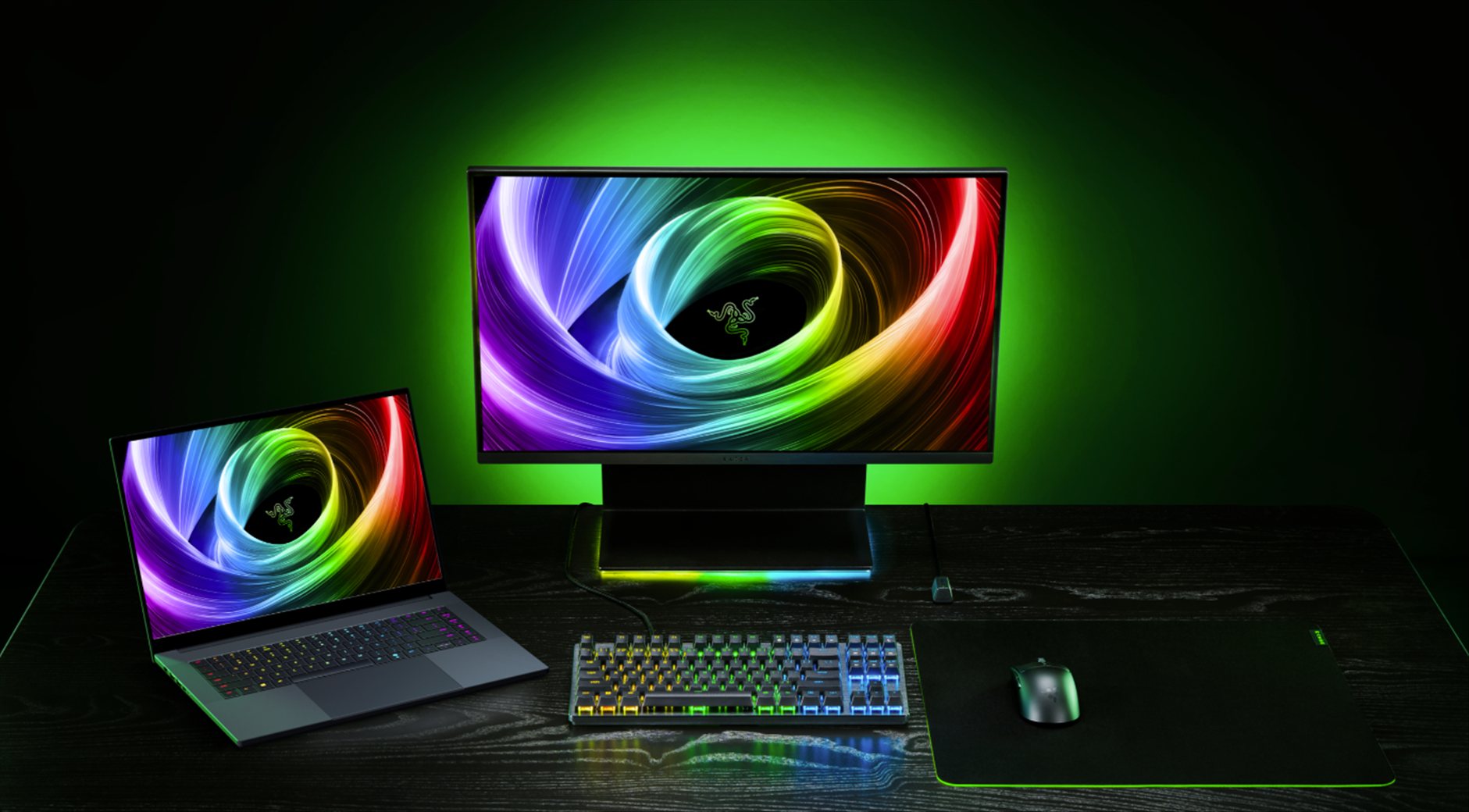
Razer has just unveiled their most ambitious gaming laptop to date, introducing the redesigned 2025 Blade 16 at CES 2025. What caught my attention isn’t just its impressive thinness at 0.59 inches, but also Razer’s surprising partnership with AMD – marking the first time we’re seeing a Ryzen processor in a Blade laptop.
The star of the show is undoubtedly the combination of NVIDIA’s latest GeForce RTX 5090 laptop GPU (packing a whopping 24GB GDDR7 VRAM) and AMD’s Ryzen AI 9 HX 370 processor. As someone who’s reviewed multiple gaming laptops, this partnership is particularly interesting since Razer has traditionally stuck with Intel processors for their premium lineup.
The display looks promising too – they’ve gone with a QHD+ OLED panel running at 240Hz with a lightning-quick 0.2ms response time. For gamers, this means butter-smooth gameplay with minimal motion blur, while content creators will appreciate the Calman Verified colour profiles covering multiple colour spaces including DCI-P3.
Cooling has always been a challenge for thin gaming laptops, and Razer seems to have tackled this with a redesigned vapor chamber system. The new cooling solution covers 57% of the motherboard and features extremely thin 0.5mm exhaust fins. It’ll be interesting to see how this performs under heavy gaming loads, especially considering the power-hungry components inside.
The keyboard has received some meaningful upgrades, including deeper 1.5mm key travel and five programmable macro keys. There’s also a dedicated Copilot key for quick access to AI features – something we’re seeing more frequently in premium laptops. Audio hasn’t been overlooked either, with a new 6-speaker system tuned by THX that should provide better sound than previous models.
Speaking of AI, this laptop (and almost all tech products these days) seems built around it. The AMD processor includes a Neural Processing Unit capable of 50 TOPS, enabling features like live translations and enhanced Windows Studio Effects. Combined with NVIDIA’s DLSS 4 and NIM microservices, it’s clear that AI capabilities are becoming as important as raw gaming performance.
The 2025 Blade 16 is expected to hit stores in Q1 2025. While pricing hasn’t been announced yet, based on previous Blade launches, I’d expect this premium gaming laptop to command a premium price tag but might be slightly cheaper due to AMD processors being used rather than Intel ones.
For gamers and content creators wanting a powerful yet portable machine, this new Blade 16 looks promising on paper. However, we’ll have to wait for hands-on testing to see how well it handles thermal management and battery life – two crucial factors for any gaming laptop, especially one this thin.
A Robot Vacuum Cleaner with Robotic Arm Was Just Announced by Roborock at CES 2025 6 Jan 3:01 AM (10 days ago)
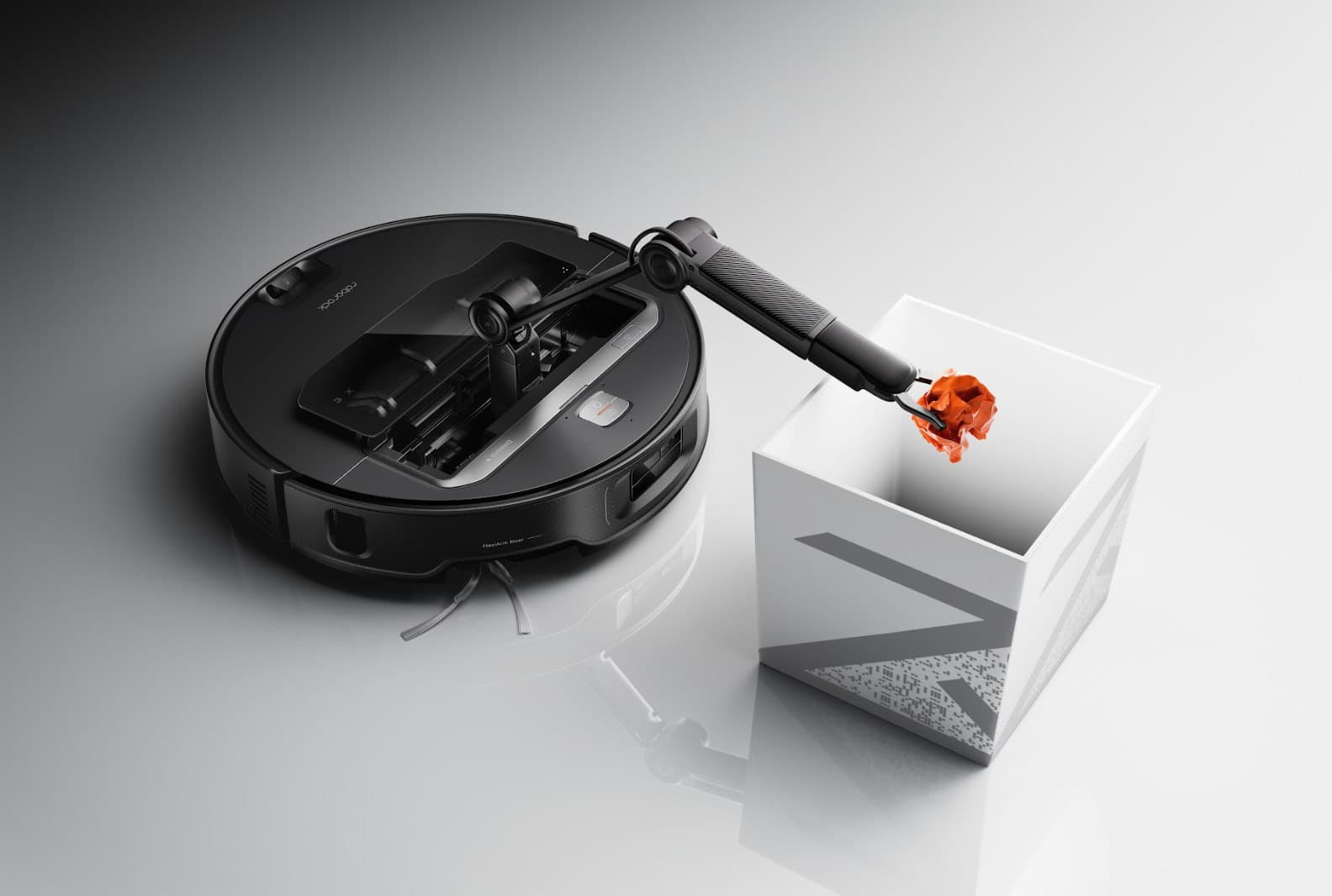
Roborock is changing the game of smart home cleaning with its latest flagship device, the Saros Z70, featuring groundbreaking robotic arm technology that’s set to transform how we think about automated home cleaning. As someone who’s tested numerous robot vacuums over the years, this announcement at CES 2025 particularly caught my attention with its innovative approach to common cleaning challenges.
The star of the show, the Saros Z70, introduces the OmniGrip system – a foldable robotic arm with five-axis movement that can actually pick up small items like socks and tissues weighing up to 300g. This is the first time we’re seeing this kind of capability in a mass-produced robot vacuum, moving beyond simple floor cleaning to more sophisticated home assistance.
Alongside the Z70, Roborock is expanding its flagship series with two other models. The Saros 10 brings a clever RetractSense Navigation System that allows it to squeeze under low furniture while maintaining excellent navigation capabilities. Meanwhile, the Saros 10R incorporates dual-light 3D Time-of-Flight technology and AI-powered RGB cameras for enhanced obstacle detection and mapping – all packed into an impressively slim 7.98cm profile.
Beyond robot vacuums, Roborock is broadening its smart home cleaning ecosystem with the new F25 Series of wet-dry vacuum cleaners. These handheld devices feature 180-degree FlatReach Deep Cleaning technology for getting under furniture, along with innovative dual scrapers that prevent hair tangles and streaks – addressing common pain points in traditional vacuum cleaners.
The company is also venturing into laundry care with three new washer-dryers: the Zeo One, Zeo Lite, and Zeo Mini. These machines utilise Zeo-Cycle drying technology, which employs zeolite to absorb moisture at lower temperatures around 50°C, potentially offering better protection for delicate fabrics compared to traditional high-heat drying methods.
While Australian pricing and availability are yet to be announced, these innovations showcase Roborock’s commitment to advancing smart home cleaning technology. The integration of AI-powered features and practical robotics could significantly impact how we approach household cleaning tasks in the near future.
Smart home cleaning, robotics technology, AI-powered cleaning devices, and robotic vacuum cleaners are evolving rapidly, and Roborock’s latest announcements at CES 2025 suggest we’re entering an exciting new era of home automation.
Aqara Smart Lock U300 Review – A Smart Lock with Apple Home Key and Matter Support 3 Jan 10:24 PM (13 days ago)
Traditional door locks can be quite a hassle to deal with. There’s always the risk of losing your key, accidentally leaving it in the door, or the tedious process of making and distributing spare keys to family and friends. As we enter 2025, it’s time to consider upgrading to a smart door lock like the Aqara Smart Lock U300, which offers multiple unlocking methods and smart home integration capabilities.
What makes the U300 particularly appealing is its Matter compatibility (Matter over Thread) and Apple Home Key support. If you’re in the Apple ecosystem, you can simply use your iPhone or Apple Watch to unlock your door. The lock is built to last and provides various backup unlocking methods, ensuring you’re never locked out even if the battery dies unexpectedly.
Aqara Smart Lock U300 Review – Packaging
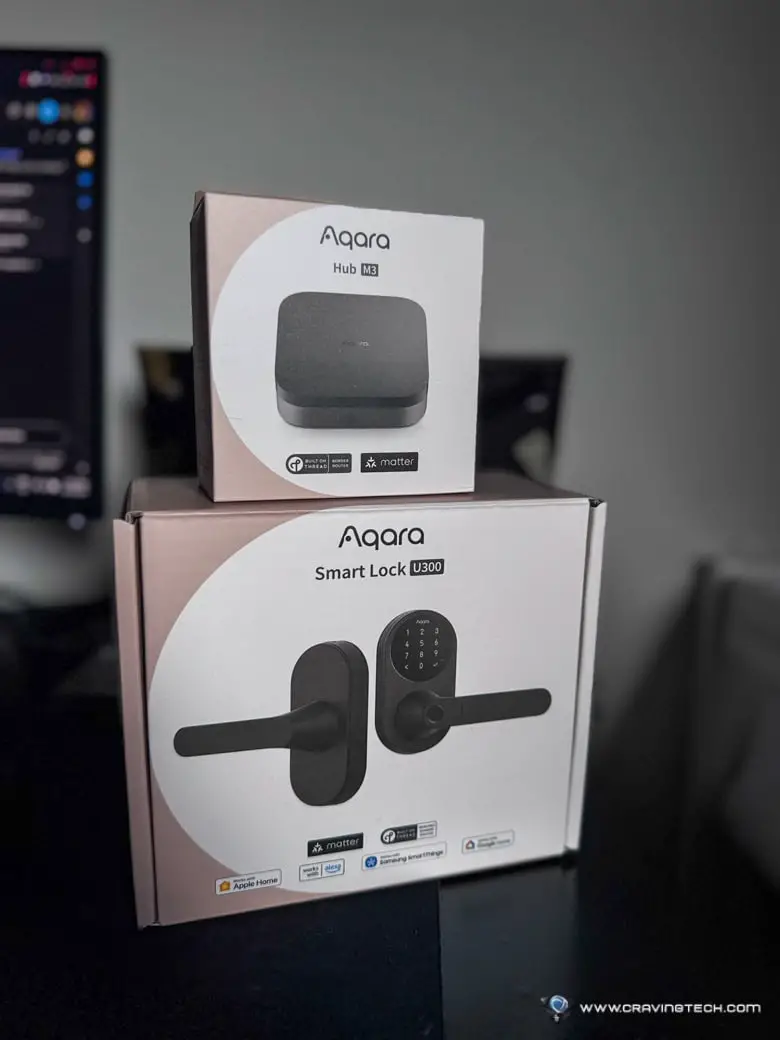
Aqara Smart Lock U300 Review – Design and Features
The Aqara U300 comes in two sleek colours: Black and Silver. I’m testing the Black version, and both options would complement modern home aesthetics nicely. The minimalist design is particularly impressive, with many components cleverly concealed from view, including the numpad which only appears when you tap the surface. It’s aesthetically pleasing.

Build quality is robust, featuring a glass touch panel and a zinc alloy outdoor panel with frosted coating. The indoor unit uses plastic with metallic coating for scratch resistance. Importantly, the front panel with the keypad is IPX4-rated, making it suitable for outdoor installation.
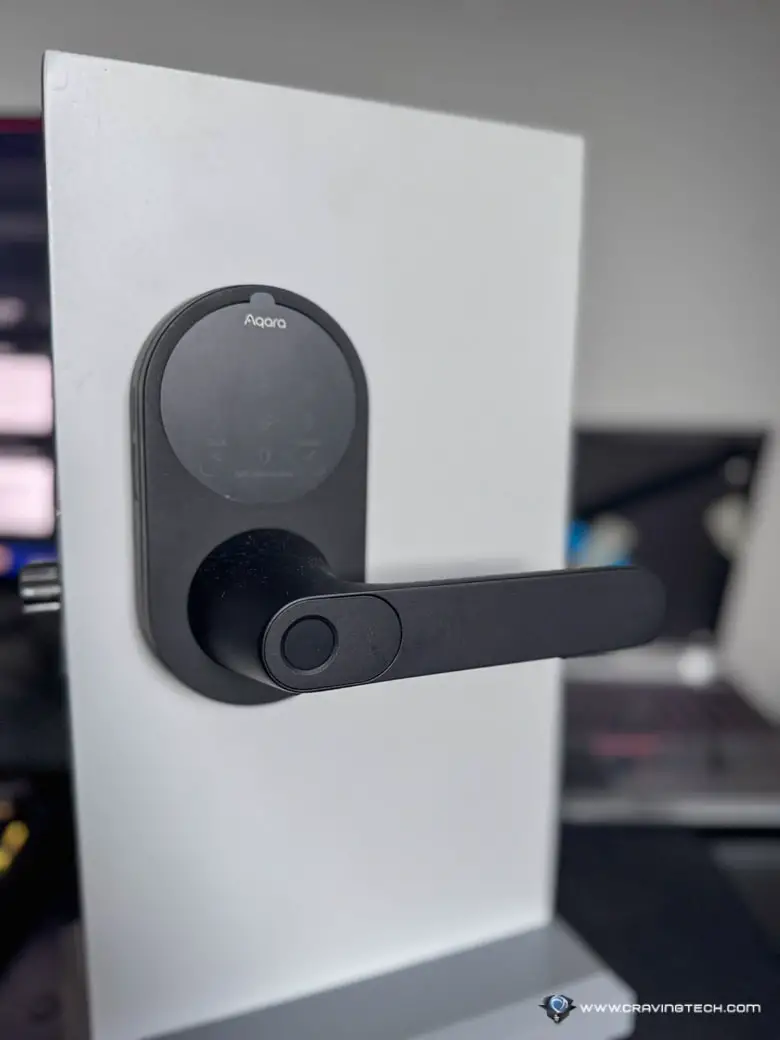
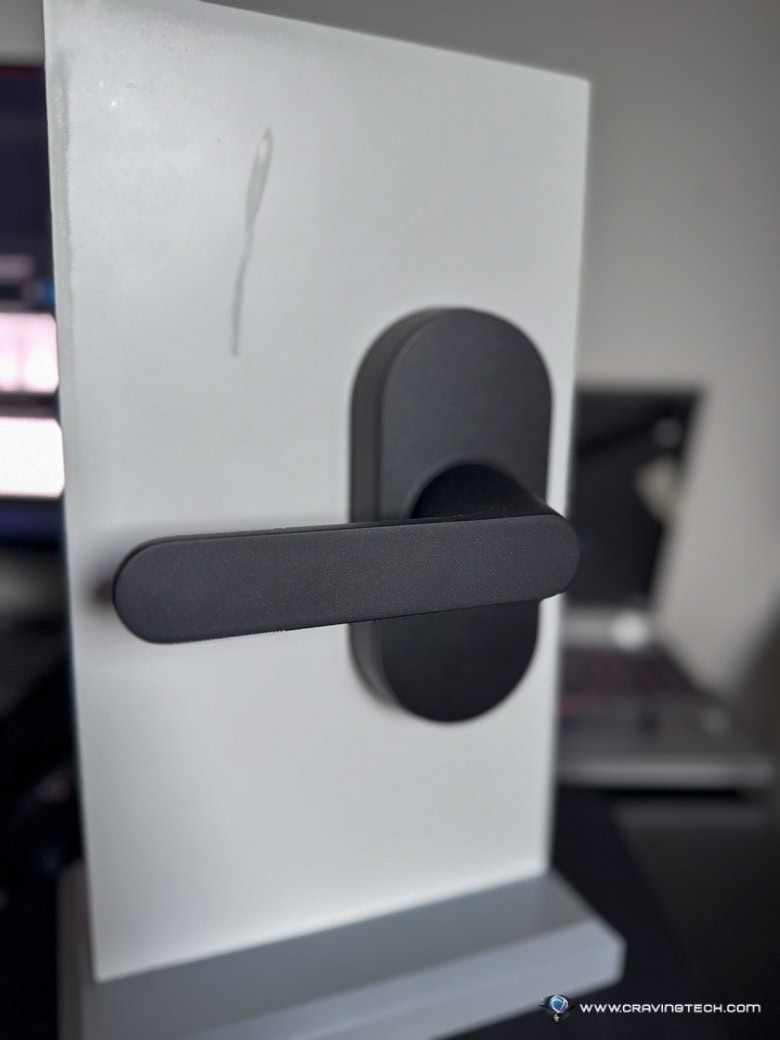
What I really like about the Aqara U300 is how it can be unlocked by many methods, giving you tons of options that suit your preference and also to integrate smartly with the smart devices you may have lingering around at home. The U300 itself support various wireless protocols like Thread, Bluetooth, and NFC. It can be unlocked by these methods:
- Fingerprint
- Password (ordinary, one-time, periodic)
- HomeKit/Siri (Bluetooth, Remote, Apple Home Key) – this includes using your iPhone and Apple Watch to unlock
- Aqara Home (Bluetooth, Remote)
- Google Home/Google Assistant (Remote)
- Amazon Alexa (Remote)
- NFC Card (Aqara and Mifare M1 Card – sold separately)
- Integration unlock via Aqara G4 doorbell (requires future OTA support)
- Mechanical Key (included in the packaging)
So yes, even when all else fails, there is a standard fallback method to unlock the door with a standard, regular key.


Setting up the U300 involves a few steps, especially when connecting to the Aqara Hub (I tested it with the M3 hub) and Apple HomeKit. The Aqara Hub M3 extends functionality by supporting Zigbee devices and Matter devices over Thread and Wi-Fi. It also doubles as an infrared controller for traditional devices like air conditioners and TVs, bringing them into the Matter ecosystem. The hub includes a 95dB speaker for alarms and notifications.




It’s worth noting that the hub isn’t mandatory unless you want automations, remote lock/unlock, and possibly more advanced features in future updates.
If you think that the whole Matter and smart home integrations are too much to your liking (not everyone is a techie), you do not need to worry. You can just set the Aqara Smart Lock U300 as it is, just to simply lock and unlock your door easily with your fingerprint. And if you have the tools to support it, you can enable unlocking with a tap from an iPhone or Apple Watch even when these devices are out of power. I have yet to try this because I’m currently travelling and don’t have my Apple TV with me. But honestly, the fingerprint unlock is fast and reliable enough that I don’t feel the need for everything else.
The fingerprint reader’s integration into the handle is particularly clever – it reads your print naturally as you grip the handle, unlocking in just 0.3 seconds. With storage for up to 50 fingerprints, it easily accommodates household members and regular visitors. The 160×160 semiconductor sensor boasts a remarkably low False Acceptance Rate (FAR) of less than 0.0001%, ensuring reliable security.






The auto-lock feature activates after 5-8 seconds, but you can disable this using Passage Mode. This is done by pressing the Passage Mode from the inside which will then leave the door unlocked until you turn the Passage Mode off. To turn it off, you can either press the Passage Mode button again but you can also set it from the app so that it auto locks after a certain time has passed (from 10 minutes to 24 hours). The latest beta firmware adds a “Never” auto-lock option for maximum flexibility.
One-time passwords are available for temporary access – perfect for couriers, contractors, or friends visiting while you’re away. The lock also includes security features like lockout mode, which triggers after 10 incorrect attempts, limiting access to key, Bluetooth, and remote unlocking only.


The U300 runs on four AA batteries (included) with an estimated 10-month battery life depending on usage. The battery compartment is easily accessible, and there’s USB-C emergency power support if needed. This thoughtful design ensures you’re never completely locked out due to power issues.


While the lock offers extensive features, I’ve noticed some inconsistencies with the logging system. Despite connecting to the Aqara M3 Hub, the logs often appear empty or show incorrect dates – an issue that other users have reported as well.
Aqara Smart Lock U300 Review Conclusion

The Aqara Smart Lock U300 is a solid choice for anyone looking to upgrade their home security with smart features. The fingerprint sensor is fast and reliable, which is really what matters most in daily use. While the Matter integration and Apple Home Key support are nice to have, even without them, this is still an excellent smart lock that just works.
I particularly like how Aqara has thought about various scenarios – from emergency power options to multiple unlocking methods. The minimalist design is a bonus, especially with the hidden keypad that only appears when needed. Yes, there are some minor software issues with the logging system and setup can take a while if you have bought the Hub and want to setup Matter & Apple HomeKit, but these don’t affect the core functionality of the lock.
The price might seem steep compared to traditional locks, but considering the features, build quality, and convenience it offers, it’s a worthwhile investment for modern homes.
The Aqara Smart Lock U300 is now available for purchase for $449 AUD at Amazon, Bing Lee, and the Aqara Official Store
Disclosure: Aqara Smart Lock U300 and Hub M3 were supplied for reviewing
HR’s Digital Shift: Embracing the AI Wave 2 Jan 8:33 PM (14 days ago)

The integration of AI into human resources is reshaping the way companies engage with their employees. What once was a hectic environment of spreadsheets and manual data processing now stands transformed, driven by intelligent algorithms designed to improve interaction and bring efficiency. This change isn’t on its way — it’s here, and it’s altering the HR industry.
The seamless integration of intelligent systems not only promises effectiveness but also enhances decision-making processes by providing insightful and actionable data. Those looking to further understand these integrations and discover the benefits of AI in HR will find that AI can significantly impact recruitment, engagement, development, and performance management within their organizations.
Automation in Recruitment
AI is making leaps in recruitment, cutting down the time and resources traditionally allocated to this laborious process. Automated systems can swiftly scour resumes for desired keywords and qualifications, assigning candidates scores that measure suitability for particular roles. The result is a more agile recruitment process where human intervention is required only after pre-qualification, saving invaluable time for HR professionals.
Furthermore, these AI-driven recruiting systems offer insights that were previously unavailable through conventional methods. By analyzing patterns found in successful hires, organizations can better understand what truly makes a candidate the right fit for their company culture. This data-driven approach empowers businesses to refine their hiring strategies and create teams composed not just of qualified individuals, but the right mix of personalities and skills as well.
Improving Employee Engagement
Employee engagement is often the metric used to gauge job satisfaction and loyalty, and AI has stepped in as a reliable partner. Through predictive analytics, companies can anticipate employee needs, enabling timely interventions and creating a supportive work environment. Feedback channels powered by AI can further personalize employee experiences, leading to higher retention rates as individuals feel more valued and heard.
Beyond measuring overall satisfaction, AI’s sentiment analysis capabilities allow HR departments to tap into the emotional pulse of their workforce. By parsing communication patterns, sentiment analytics can alert managers to emerging issues before they escalate into major challenges. This proactive approach strengthens the relational fabric within organizations, fostering environments where open dialogue and mutual respect prevail.
Performance Management
Performance management, once a bureaucratic chore, benefits greatly from AI’s analytical prowess. Automated systems monitor and evaluate all aspects of an employee’s work, offering an unbiased assessment. Instant feedback becomes the norm, replacing outdated annual reviews with real-time improvements and guidance. Organizations have the opportunity to act swiftly, aligning staff goals with business objectives more often and more accurately than ever before.
This approach also bridges the communication gap between employees and their supervisors, facilitating a transparent environment where expectations are clearly outlined and met with actionable insights. Employees are no longer left guessing where they stand, while management gains the ability to nurture talent and address skill deficits promptly, fostering a more empowered workforce.
Learning and Development
The delivery of training and education is another area where AI has made significant contributions. Personalized learning paths, shaped by an individual’s strengths and gaps, are now possible. With the aid of AI, these paths adapt quickly as employees grow, ensuring that learning remains relevant and effective. This fosters a corporate culture that is continually developing talent capable of adapting to new challenges.
Additionally, AI can help identify emerging skills needed for future roles within the company, guiding workforce development strategies. By recognizing trends and patterns in industry needs, AI-equipped HR departments can proactively tailor their training programs, ensuring employees possess the skills necessary for both current and projected demands, thus securing the company’s future readiness.
Challenges and Ethical Concerns
While the potential is vast, the challenges accompanied by AI’s rise demand attention. Implicit bias in algorithmic decisions remains a concern, prompting ongoing scrutiny and refinement to ensure fairness. Furthermore, there’s always the risk of too much reliance on technology, potentially sidelining the emotional intelligence that is irreplaceable in any human-centric profession. These concerns aren’t to be dismissed lightly, for they form part of the broader discussion on AI’s place in human affairs.
The Future of HR
The momentum of AI in HR shows no signs of slowing. As algorithms evolve and data grows richer, the capacity for AI to refine and innovate within human resources only broadens. This technological journey invites HR professionals to redefine their roles — from gatekeepers of hiring and compliance to strategic partners steering organizational change. It’s a transformation that’s as inevitable as it is exciting, charting a bold new course for HR departments worldwide.
Understanding Video Editing SDKs 26 Dec 2024 2:19 AM (21 days ago)

In today’s multimedia-driven world, video editing applications are essential for content creators, businesses, and hobbyists. Developing such applications requires robust tools and frameworks that can handle video manipulation efficiently. This is where Video Editing Software Development Kits (SDKs) come into play. A video editing SDK simplifies the development process, offering pre-built modules and APIs to integrate video editing functionalities seamlessly into applications.
What is a Video Editing SDK?
A Video Editing SDK is a collection of tools, libraries, and APIs designed to help developers add video editing capabilities to their applications. These SDKs provide the building blocks for tasks such as trimming, merging, adding effects, and rendering videos. By leveraging an SDK, developers can save time and focus on customizing features rather than coding everything from scratch.
Key Features of a Video Editing SDK
- Timeline Editing: Support for adding and arranging video clips, audio tracks, and effects on a timeline.
- Video Effects and Filters: Pre-built effects like transitions, color grading, and animations to enhance video quality.
- Audio Integration: Tools for syncing audio with video, adding background music, and applying sound effects.
- Format Support: Compatibility with various video and audio formats, including MP4, AVI, MOV, and AAC.
- Export Options: Options to render and export edited videos in different resolutions and formats.
- Cross-Platform Support: Capability to develop applications for Windows, macOS, Android, iOS, and web platforms.
Benefits of Using a Video Editing SDK
- Efficiency: Pre-built functionalities reduce development time and effort.
- Customization: SDKs offer flexible APIs to tailor features to specific application requirements.
- Scalability: Advanced features like multi-track editing and 4K/8K video support make SDKs suitable for both basic and professional-grade applications.
- Cost-Effectiveness: Avoiding the need to develop video editing features from scratch saves resources and budget.
Popular Video Editing SDKs
- VisioForge Video Editing SDK
- A powerful toolkit for .NET developers.
- Offers features like timeline editing, transitions, and real-time effects.
- Supports a wide range of video and audio formats.
- FFmpeg Libraries
- While not a dedicated SDK, FFmpeg provides extensive capabilities for video processing.
- Ideal for developers who need fine-grained control over video editing tasks.
- Banuba Video Editor SDK
- Focused on augmented reality (AR) effects and AI-driven features.
- Includes pre-built templates for creating user-friendly video editing applications.
- GStreamer
- An open-source multimedia framework suitable for video editing and streaming.
- Offers plugins for customizing video pipelines.
Developing with a Video Editing SDK
- Choose the Right SDK Select an SDK that aligns with your project’s requirements, such as platform compatibility, budget, and feature set.
- Set Up Your Development Environment Install the necessary libraries and dependencies, and integrate the SDK into your project.
- Implement Core Features Use the SDK’s APIs to add essential functionalities like trimming, merging, and applying effects.
- Test Across Platforms Ensure consistent performance and compatibility across target devices and operating systems.
- Optimize for Performance Use efficient algorithms and memory management practices to handle resource-intensive video processing tasks.
Use Cases for Video Editing SDKs
- Content Creation Applications: Tools for YouTubers, vloggers, and professional video editors.
- Social Media Platforms: In-app video editing capabilities for creating and sharing content.
- Corporate Training: Video editing tools for creating tutorials and presentations.
- Education: Applications for students and educators to create engaging multimedia projects.
A Video Editing SDK is an invaluable resource for developers aiming to build feature-rich video editing applications. By leveraging the capabilities of an SDK, developers can streamline the development process and focus on delivering innovative solutions. Whether for entertainment, education, or business, a well-chosen SDK empowers developers to meet the growing demand for video editing tools efficiently and effectively.
T-Force XTREEM ARGB DDR5 RAM Review: Premium Performance Meets Clean Design 25 Dec 2024 5:14 AM (22 days ago)

TeamGroup’s latest DDR5 memory offering, the T-FORCE XTREEM, lives up to its name with extreme design, performance, and features. This review explores the 32GB 6000MHz DDR5 kit that brings a clean, simple aesthetic to any gaming PC build.
Packaging Contents
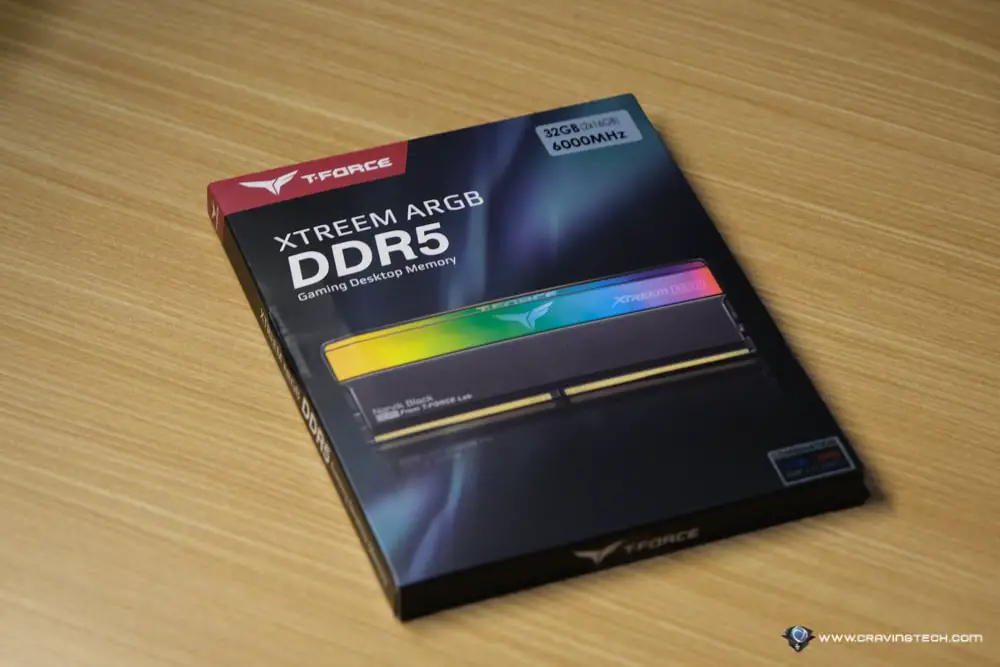
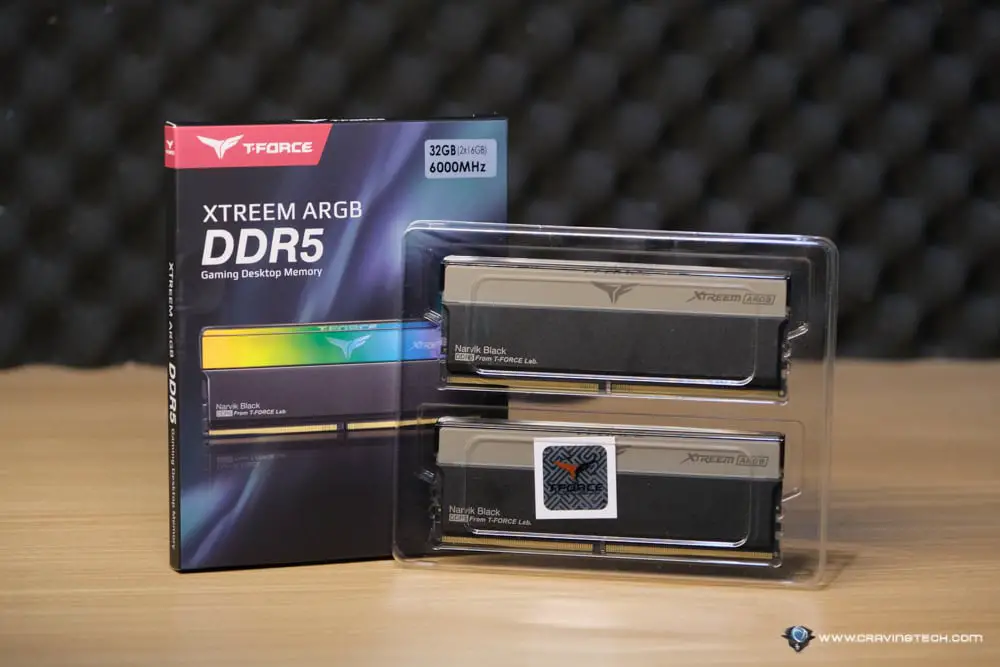
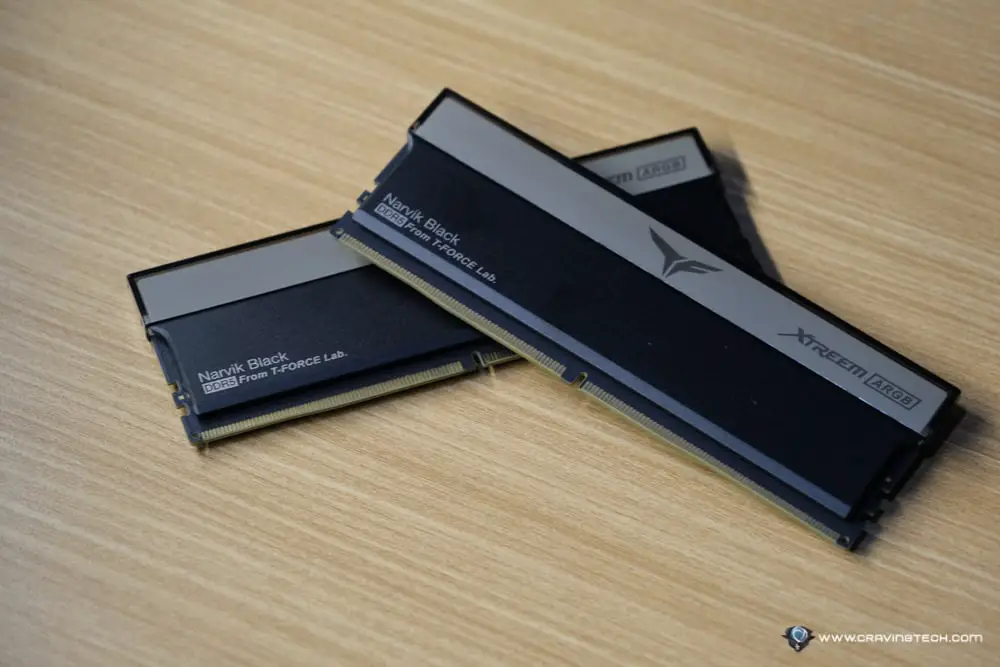
Design and Features
The T-Force XTREEM ARGB immediately catches the eye with its fantastic aurora lighting effects. Available in NARVIK black and white, the RAM features stunning grey metal craftwork complemented by tempered glass panels on both sides of the ARGB strip. This combination creates an outstanding look that enhances any PC build.

RGB enthusiasts will appreciate the comprehensive software compatibility. The ARGB lighting works seamlessly with popular motherboard software including ASROCK Polychrome Sync, ASUS Aura Sync, BIOSTAR Sync, GIGABYTE RGB Fusion 2.0, and MSI Mystic Light Sync. This wide compatibility makes it easy to synchronise your PC’s lighting scheme.
Test System Specifications
For this review, I tested the RAM in a system running:
- AMD Ryzen 7 7800X3D Processor
- Gigabyte B650 AORUS ELITE AX Motherboard
- AMD Radeon RX 7900 GRE Graphics Card
- ID COOLING SL360 XE WHITE CPU Cooler
Performance and Compatibility
The T-Force XTREEM ARGB supports both Intel XMP 3.0 and AMD EXPO profiles, making it versatile for both Intel and AMD platforms, and whether you are a hardcore or casual gamer. The RAM can operate between 6000MHz to 8000MHz, depending on your motherboard’s capabilities. In my AMD-based test system, the RAM performed excellently at 6000MHz using the AMD EXPO profile.

Comprehensive Testing Results
I put the RAM through extensive testing using various benchmarking tools. Here are the key findings:
1. AIDA64 Extreme Cache and Memory Benchmark
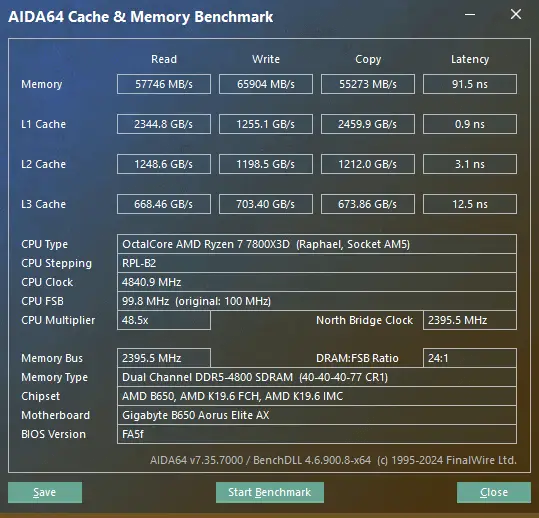
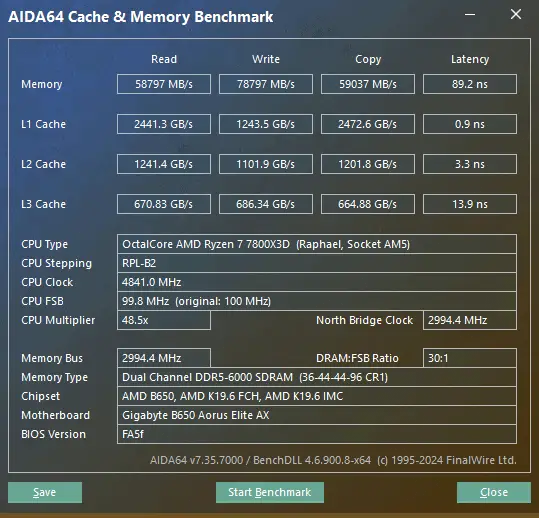
AIDA64 Extreme testing revealed impressive write and copy performance improvements when comparing the default 4800MHz to the overclocked 6000MHz speeds.
2. CPU-Z memory and SPD Data
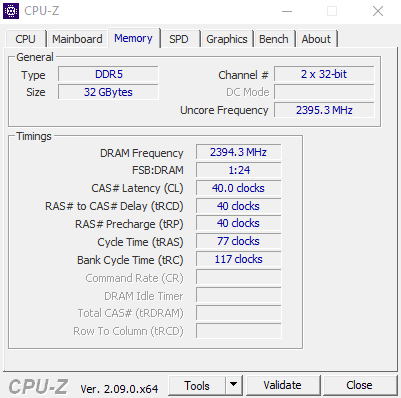
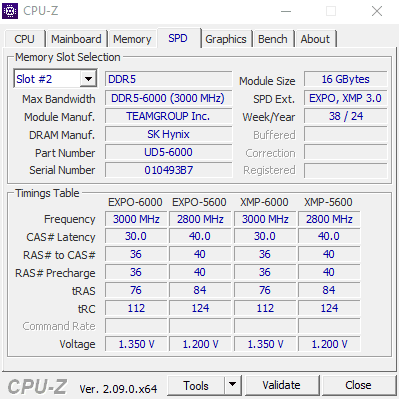
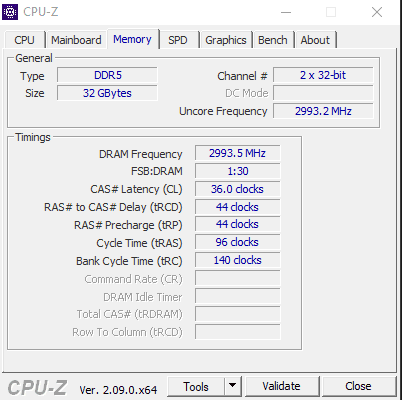
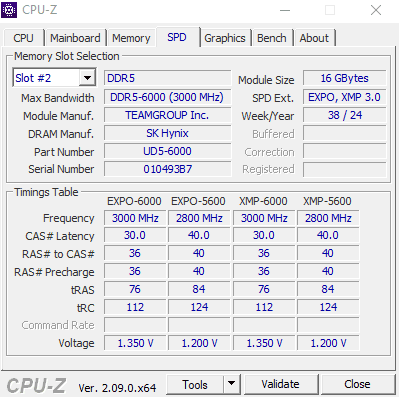
The screenshot on the top left shows the RAM running at Default speed of 4800MHz, and the bottom left shows the RAM running at the overclock speed of 6000MHz. CPU-Z SPD tab shows that the RAM memory is capable to overlocking using AMD EXPO and intel XMP 3.0 profiles even though the RAM still running on the default speed.
3. HW Monitor Data


Temperature monitoring through HW Monitor showed excellent thermal performance. Even when overclocked to 6000MHz using AMD EXPO Profile 1, the RAM maintained a stable 44°C, well below the typical 60-70°C threshold for DDR5 memory. The left screenshot shows the standard Core Temperature and Voltages at 4800Mhz clock speed and the right shows the overclocked speed using AMD EXPO profile 1 running at 6000MHz.
4. Memtest64 LOOP
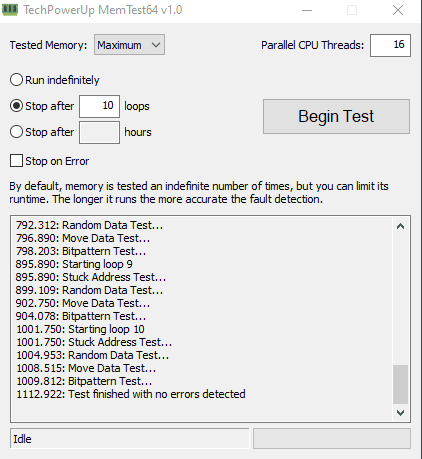
Stability testing proved impressive. The RAM passed 30 minutes of Memtest64 with 10 loops showing zero errors which means the T-FORCE XTREEM RAM’s stability is very good.
5. Memtest86 LOOP
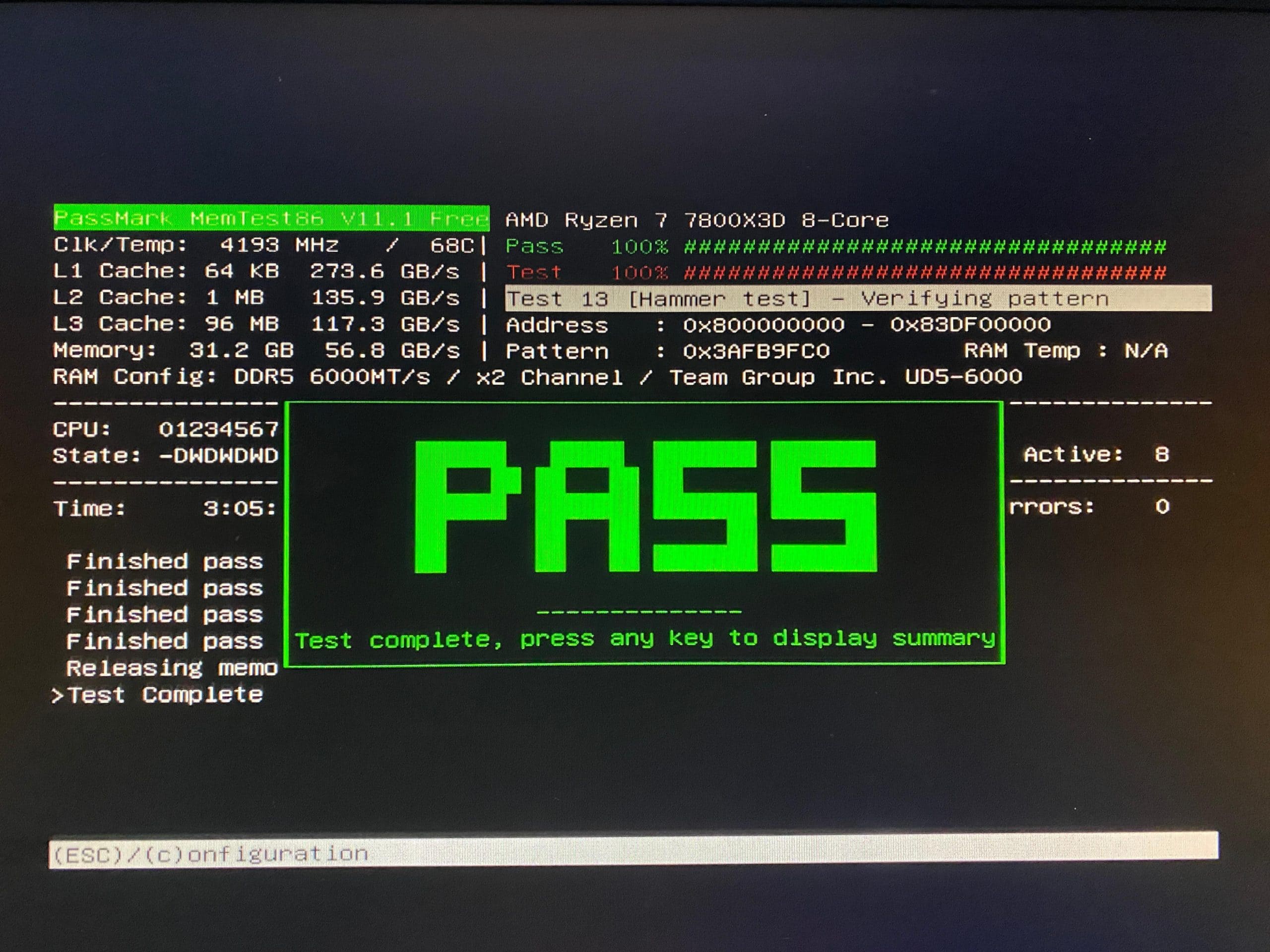


Last but not least, Memtest86 is very popular among hardware enthusiasts to stress test memory RAMs. More rigorous testing with Memtest86 over 3 hours and 4 complete loops also resulted in a perfect PASS, demonstrating exceptional stability even when overclocked.
6. Counter Strike 2


I chose Counter-Strike 2 for real-world testing as it’s particularly demanding on CPU and RAM performance. The T-Force XTREEM ARGB handled the game excellently, helping to achieve average framerates around 480 FPS. Task Manager monitoring showed no bottlenecking, confirming the RAM’s ability to keep up with both CPU and GPU demands.
T-FORCE XTREEM ARGB 32GB 6000 MHz DDR5 Review Conclusion

The T-FORCE XTREEM ARGB DDR5 RAM impresses with its stable 6000MHz performance and excellent thermal management. At A$209 (for the 2x16GB kit), it offers good value considering its premium build quality, aesthetic design, and reliable performance. The combination of clean aesthetics and robust performance makes it a compelling choice for gamers building a new DDR5 system in the new year of 2025.
The upgraded PMIC (Power Management Integrated Circuit) effectively maintains power stability during extended gaming sessions. The premium 10-layer anti-interference board design helps maintain thermal stability and consistent clock speeds. TeamGroup backs this quality with a lifetime warranty.
Whether you’re a competitive gamer needing reliable high-speed memory or a PC enthusiast looking for premium RAM with clean aesthetics and simple design, the T-Force XTREEM ARGB deserves serious consideration. Its ability to maintain stability under heavy loads while keeping temperatures well in check makes it a solid choice for modern gaming rigs.
Disclosure: T-FORCE XTREEM ARGB DDR5 RAM kits were supplied for reviewing
Nextbase Piqo 2K Dash Cam Review – Australia’s Affordable Dashcam 22 Dec 2024 5:00 PM (25 days ago)
The Nextbase Piqo 2K is a compact 2560 x 1440p resolution dashcam that comes packed with smart features, all for a $299 AUD price tag (at Harvey Norman). As the more budget-friendly version of the flagship Nextbase iQ series, it includes “Lite” versions of key smart features like Guardian Mode (which alerts you when speed or location limits are exceeded) and Witness Mode (a voice-activated tool that sends an emergency SMS to selected contacts).
On top of that, it offers other handy features such as Emergency SOS and Smart Parking, all of which I’ll explore in this review. So without further ado, let’s dive right in!
Packaging Contents
Inside the box, alongside the dashcam, you’ll find:
- A cable prying tool
- A USB-C to right-angled USB-C power cable
- A 12V power adapter with two USB-C ports (allowing you to charge or power another device at the same time)
- A spare adhesive pad/dash cam mount
- Microfibre cloth and cleaning wipes
- A 32GB U3 microSD card


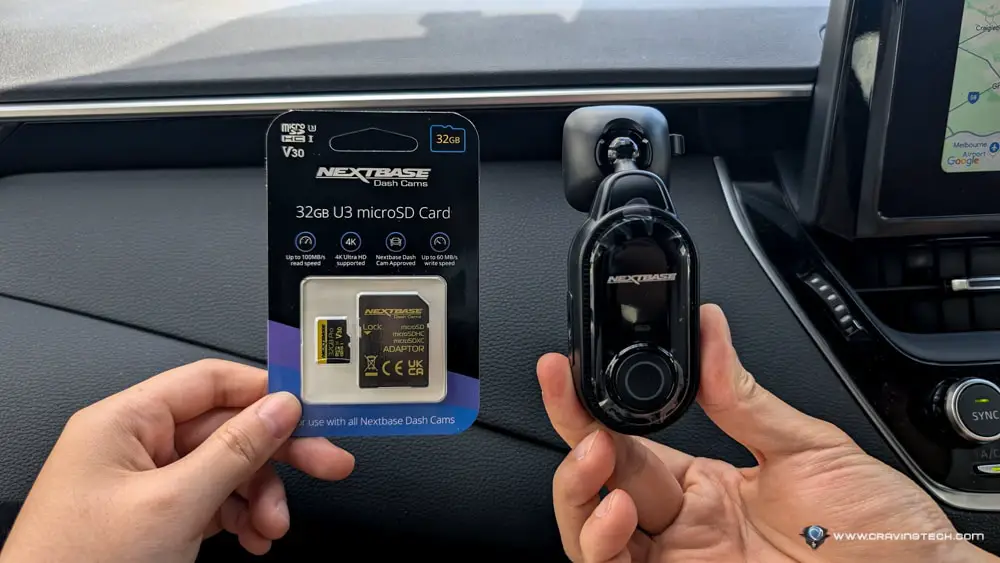
Design
The Piqo 2K is small, compact, and lightweight, with a sleek all-black design. It has a low-key appearance, not drawing much attention when mounted on the windshield. The camera is positioned at the front, and there’s a button on the back, with an LED light above that flashes in different colours to show the dashcam’s status.
On one side, you’ll find the SD card reader, while the USB-C power connector is on the other. There’s no screen, in keeping with the minimal design. Overall, I have no complaints about the aesthetics—it looks great. But I especially appreciate how compact and light it feels.

Setup
Setting up the Piqo 2K is super straightforward. To do this, you have to download the Nextbase app, which provides clear, step-by-step guidance. The app takes you through everything, from finding the best spot to mount the dashcam, to syncing it with your phone, and managing the power cable. Once that’s done, the app also lets you manage all the smart features, as well as view or download your videos.
Features
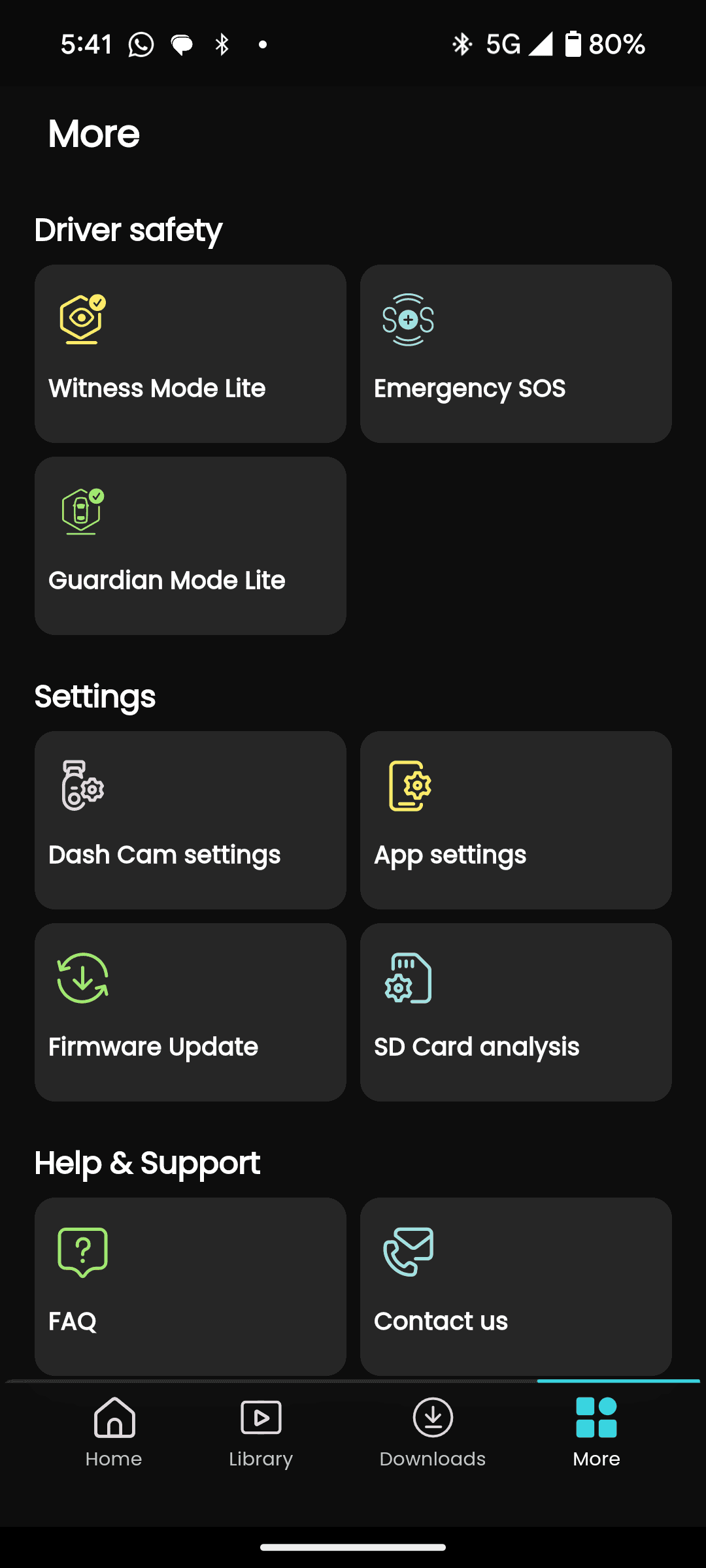



1440p QHD Recording Quality
I’m really happy with the video quality on the Piqo 2K, as it delivers excellent footage during the day, and more than sufficient clarity even at night. Each video includes time, date, location, and vehicle speed data for a complete trip information. The dashcam stores these videos directly onto the SD card, and it can support SD cards of up to 256GB for expanded storage. Once the card reaches its capacity, it automatically overwrites the oldest footage to make room for new recordings.
Witness Mode Lite
This is a useful voice-activated feature that alerts your selected contacts when activated. It sends an emergency SMS, including a link to a video of your dashcam’s view. To activate, just say, “Hey Nexy, Witness Mode”.
Guardian Mode Lite
Guardian Mode Lite lets you set speed and location limits for your vehicle. If someone else is driving and exceeds these limits, you’ll receive an alert, giving you better oversight of how your car is being used.
Smart Parking
With Smart Parking, the dashcam automatically detects if your car is hit and records the incident. You’ll receive an alert when you return, and you can quickly review the footage through the Nextbase app. However, to use this feature, you’ll need either the Piqo Pro Hardwire Kit or Quick Connect cable, which provide continuous power to the dashcam—both of which are sold separately.
Emergency SOS
If you experienced a serious accident, the Emergency SOS feature contacts emergency services, automatically sharing your location and other important details to ensure a quick response. Note that this feature is available via a $5 AUD per month subscription.
Overall, the Nextbase Piqo 2K offers a pretty well-rounded set of features for this price point. Although it’s unfortunate that some advanced features require additional accessories or a subscription, I think it still provides pretty great value for anyone looking for better security or peace of mind.
Nextbase Piqo 2K Review Conclusion

The Nextbase Piqo 2K offers excellent value with its impressive video quality, smart features like Witness Mode Lite and Guardian Mode Lite, and easy-to-use setup via the Nextbase app. It also includes features like Smart Parking and Emergency SOS, though some require additional purchases or a subscription. It does lack a rear dashcam, which may be a consideration for those looking for a more complete coverage. Despite this, its compact design and solid performance make it a great option for those looking for a budget-friendly but still feature-packed dashcam.
Nextbase Piqo 2K is available for A$299 RRP (and there’s also the 1K model for A$199), available through Harvey Norman and other selected Australian retailers. It is supported by two subscription packages with options from free and A$4.99 with no contract required:
Solo (free) includes:
- Guardian Mode Lite
- Witness Mode Lite
- Voice Control
- Smart Parking
- Download & Share Videos
- 30 Days’ Cloud Storage
- 12 Months’ Warranty
Protect – ($4.99 per month or $59.99 annually, no contract required) includes all the above plus the following features:
- Emergency SOS
- 180 Days’ Cloud Storage
- Enhanced 36 Months’ Warranty
Disclosure: Nextbase Piqo 2K review sample was supplied for reviewing
Overwatch 2 x Avatar Lets Out Awesome Skins for your Heroes 18 Dec 2024 3:33 AM (29 days ago)

The Overwatch 2 x Avatar: The Last Airbender collaboration has gone live today, offering new in-game cosmetics like heroes’ skins, emotes, titles, voice lines, and many more. You could probably have guessed which heroes would take the cosplaying for certain characters from the beloved Avatar franchise – I mean, Zenyatta as Aang is an obviously best choice.
From today until the December 30th, you can grab these full cosmetics bundle through the in-game shop with Overwatch coins. But if you are not planning to, there are still free rewards to be claimed through the collaboration event – including Katara Mei skin!
All you need to do is to complete the event challenges to unlock the skin, no money or credits involved. Basically, just play the game during the events!
Venture also finally gets the first skin, so if you are playing the hero, this is definitely your moment, assuming you have saved up some credits (or you can also purchase Overwatch credits with real money to grab the Toph Venture skin, along with Emotes and other goodies that come with it.
Here are the complete heroes skins:
- Zenyatta as Aang
- Venture as Toph
- Genji as Zuko
- Mei as Katara
- Orisa as Appa
- Kiriko as Suki

Zenyatta is one of my mains and I love all the cosmetics included in this collaboration like his Highlight Intro, and also how you can hear some jingle music when you hold the right click. Though I guess some may not like this at all, too bad that this comes with the skin and there’s no way to turn that on and off.
This is definitely not Overwatch’s first collaboration and certainly not the last. Following the successful collaboration before like the Cowboy Beebop and Transformers, I’m sure the Avatar: The Last Airbender Collab will also be a hit among the Overwatch fans.
Players can log in to Overwatch 2 and grab the skins from the shop.
